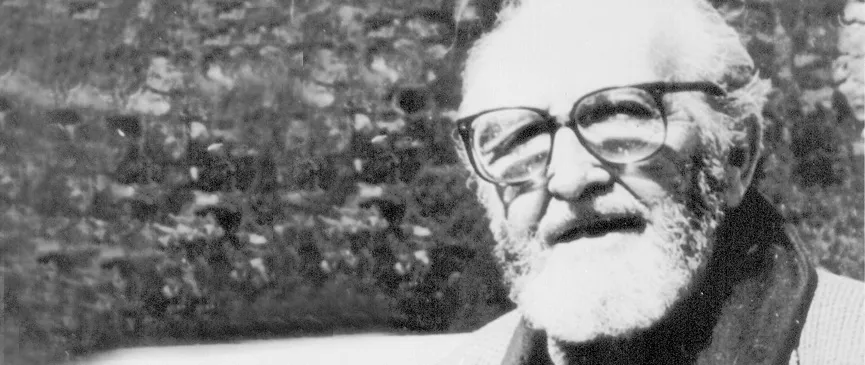Main content
Pablo Serrano Prince of Asturias Award for the Arts 1982

The sculptor Pablo Serrano (Crivillén, Teruel, Spain, 1910 - Madrid, España, 1985) studied in Zaragoza, subsequently attending the School of Fine Arts of San Jorge, in Barcelona. On finishing his training, he emigrated to South America, living first in Argentina and later in Uruguay.
Serrano’s first works are a faithful reflection of his period of academic education, until in 1940 he began to evolve slowly towards baroque expressionism. In 1942 he formed part of the “Paul Cézanne” group of young artists, founded in Montevideo and which aimed to break with conventional routines. This transformation in the work of Pablo Serrano became patent in the doors for the Palace of Light (1946), which are already something quite different, both in concept and execution, from the bronze doors for the crypt of the Colegio de San José, in Rosario de Santa Fe, one of his first works in America (1935). After winning the Grand Prix at the Montivideo Biennial (1955), he returned to Spain, where he was to begin a career as a sculptor which was to take his works into the most important museums and collections in Europe and America. The very year of his return home he obtained the Grand Prix for Sculpture at the Hispano American Biennial of Art, held in Barcelona, with his head of J. Howard. This was to be the first of a series of portraits of the busts of a number of his friends, including those of José Camón (1958), Professor Aranguren (1963) and Fernando Castro (1968). Around 1957, Serrano founded together with other friends, the group “El Paso”, whose work at both an individual and group level was to leave its mark on contemporary Spanish art. Another important series of portraits are not from life, but interpretations of people who never posed for the sculptor: those of Goya (1959), the Christ of México (1966) and the busts of Antonio Machado (1966) and Pablo Picasso (1973). Serrano also made three monuments on a grand scale for three illustrious Spaniards: Miguel de Unamuno (1967-68), Benito Pérez Galdós (1969) and Gregorio Marañón. This series culminated, in a certain sense, in the “Pity” at the Middleheim Museum in Antwerp (1971-72).
From the studies which arose from his stays in various European countries in 1956, Pablo Serrano developed other themes in following years: Rhythms in Space, Burning of the Object and other works of great abstract value. He also began to use old iron and demolition material in his work, materials with which he formed the series Domes for Man. In 1967 he had exhibitions in New York and Toronto, where he presented his work Men with Doors, from which the musician Terry Philips created the song Men with Doors, with lyrics by the sculptor. In the seventies, these works culminated in contorted forms with human faces: “Dome Men”, and the great dome of Aldeadávila, in which fragments of nature are represented and tools of great symbolic content are included Serrano also created the group of what he called Lumínicas (Light Particles) and that of Unidades yunta (Yoke Units). A monumental example of the latter is that forming part of the Open Air Museum of Sculpture on the Paseo de la Castellana, Madrid.
A member of the European Society of Culture, of the Royal Academy of Arts and Letters of Flanders (Belgium) and invested Cavalier of Arts and Letters by the French Government, he belonged to the Royal Academy of Fine Arts of San Fernando and held the Gold Medal for Fine Arts. The more than four hundred works he bequeathed to his homeland were installed in the Pablo Serrano Museum in Zaragoza.
End of main content
